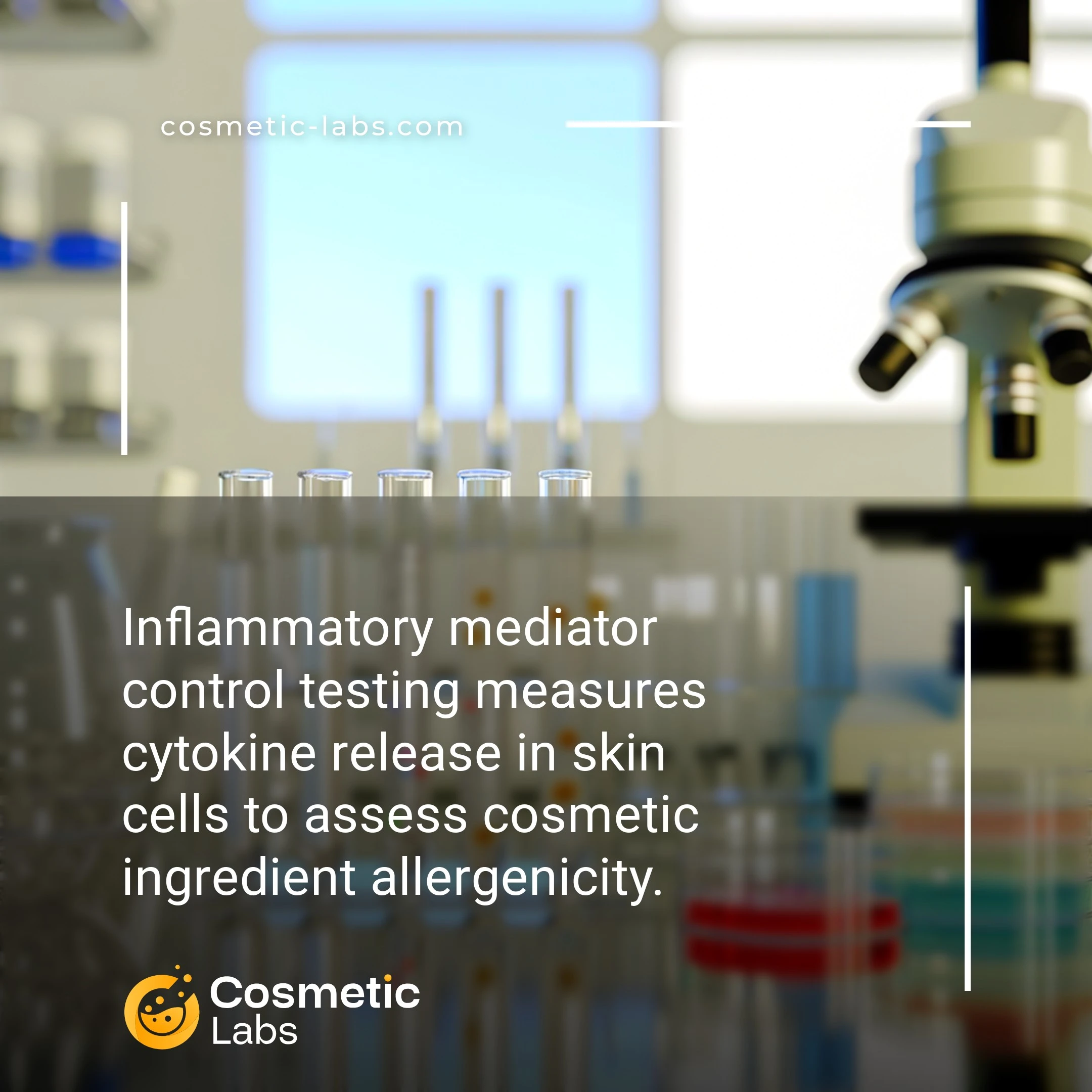Inflammatory Mediator Testing for Cosmetic Allergenicity

What is Inflammatory mediators control?
Inflammatory mediator control for allergenicity testing is a laboratory service that measures how cosmetic ingredients trigger immune responses by monitoring cytokine release from skin cells. Labs use in vitro assays with human keratinocytes to detect inflammatory markers like IL-1α and IL-18 within 24-48 hours, helping brands identify potential allergens before consumer exposure. This testing reveals which formulation components activate inflammatory pathways, allowing you to reformulate products proactively rather than react to consumer complaints.
Why do you need this service?
Beauty brands partner with cosmetic labs to implement inflammatory mediator control protocols during product development, measuring cytokine release and histamine responses to identify potential allergens before market launch. This testing approach helps formulators adjust ingredient concentrations and select safer alternatives, delivering reduced regulatory risk and faster approval timelines for sensitive skin products and hypoallergenic formulations.
Who provides Inflammatory mediators control services?
All cosmetic labs providing Inflammatory mediators control services
There is no company providing these services at the moment.
Inflammatory Mediator Control in Allergenicity Testing
Controlling inflammatory mediators during allergenicity testing provides accurate data on how cosmetic ingredients trigger immune responses. This targeted approach helps labs identify potential allergens before they reach consumers, building on standard preclinical testing protocols.
Cytokine Release Monitoring
Labs monitor inflammatory mediator release through specialized cell culture systems that track cytokine production. These tests measure interleukin levels, tumor necrosis factor, and other immune signaling molecules when skin cells contact your ingredients.
Key inflammatory markers include:
- IL-1β and IL-8 for acute inflammation
- TNF-α for tissue damage response
- Histamine for immediate allergic reactions
- Prostaglandins for delayed inflammatory responses
This data helps you reformulate products before clinical trials, saving time and development costs.
Controlled Exposure Testing
Testing facilities use dose-response protocols to determine safe concentration thresholds for potentially allergenic ingredients. They expose cultured skin models to varying ingredient concentrations while measuring inflammatory mediator output.
The process involves:
- Baseline mediator measurement in untreated cells
- Graduated exposure to test ingredients
- Real-time monitoring of inflammatory responses
- Statistical analysis of dose-dependent reactions
Results guide formulation decisions and help establish safe usage levels for your cosmetic products. Connect with specialized labs on our platform to discuss inflammatory mediator testing for your specific formulations.
Applications of Inflammatory Mediator Control in Allergenicity Testing
Cosmetic labs use inflammatory mediator control for allergenicity testing to validate product safety across multiple development stages and regulatory requirements.
Product Development and Reformulation
Labs measure histamine release, cytokine production, and prostaglandin levels during ingredient screening phases. This approach identifies potential allergens before full formulation, reducing development costs by 40-60% compared to traditional patch testing alone.
When reformulating existing products, teams track specific inflammatory markers like IL-1β and TNF-α to compare new formulations against baseline measurements. Real-time monitoring allows formulators to adjust concentrations within 48-72 hours rather than waiting weeks for clinical results.
| Inflammatory Marker | Detection Method | Typical Response Time | Sensitivity Level |
|---|---|---|---|
| Histamine | ELISA assay | 2-4 hours | 0.1-100 ng/mL |
| IL-1β | Multiplex immunoassay | 6-24 hours | 0.5-500 pg/mL |
| TNF-α | Flow cytometry | 4-12 hours | 1-1000 pg/mL |
| Prostaglandin E2 | Competitive immunoassay | 1-3 hours | 15-2000 pg/mL |
Regulatory Compliance and Market Entry
International markets require specific inflammatory response data for cosmetic registration. Labs generate compliant datasets measuring complement activation, mast cell degranulation, and T-cell proliferation according to OECD guidelines and regional standards.
For EU market entry, labs document inflammatory mediator profiles using validated in vitro methods that replace animal testing requirements. Quantitative biomarker data supports CPSR documentation and helps brands meet REACH regulation demands for ingredient safety assessment.
Ready to validate your product’s safety profile? Contact specialized labs on our platform that offer inflammatory mediator testing services tailored to your market requirements.
